[Atari, SUPERware]
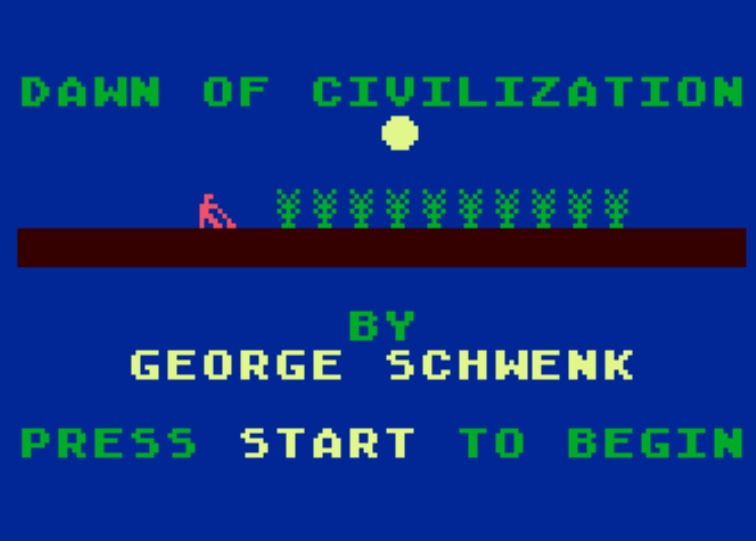
I dimly remember my first exposure to Conway’s Game of Life. In the early 90s, my father was regularly bringing back from his office small boxes of 51/4-inch floppies, and the only indication as to the content of those floppies was the hand-written mention: “divers” [“various” in French]. In this innocent era when I did not know the meaning of the word “piracy”, I was sometimes bored enough to explore the content of those floppies. Most of the time I was unable to either understand or appreciate their software – my father was not selective in what he brought home, and the same box could include games, tools or whatever content you can imagine, of all eras and all genres. Still, I occasionally found interesting games, in which case I would write down their names on the label below “divers” for future reference.
Scrounging thus, I found a game simply called Life. It allowed you to position “cells” on a grid, and then launch the simulation. I did not find it interesting and quickly discarded it without adding its name below divers. All the games that did not have their name added were given new chances, as I regularly re-explored the divers floppies, and sometimes a game that I had overlooked was allowed, on the second or third examination, to have its name added to the label. But Life never had this honour, and eventually when I had enough items in my gaming rotation I stopped investigating the divers floppies altogether. Life had missed its chance. Much later, I learned about Conway’s Game of Life, understood that it was what Life had been all along, and did not think any more of it – it was not a real game after all.

Well, that was until George Schwenk’s Dawn of Civilization, which gamifies Conway’s Game of Life. I already discussed Schwenk in my previous article, so let’s move to the game.
The objective of Dawn of Civilization is to have more “tribes” (the equivalent of Conway’s cells) than the other 3 rivals after a preset number of turns (default: 11).

The “Life” ruleset of Dawn of Civilization is the following:
- For a location that is occupied by a tribe:
- If it is not adjacent to another friend tribe, it dies by isolation. This is less strict than Conway’s Game of Life (“Each cell with one or no neighbours dies”)
- If it is not adjacent to at least 4 units of food (=empty squares), it dies by starvation. This is the same as Conway’s Game of Life (“Each cell with four or more neighbours dies, as if by overpopulation”)
- For a location that is not occupied by a tribe:
- If it is adjacent to exactly 3 friendly tribes, it becomes occupied by a new tribe. This is the same as Conway’s Game of Life (“Each cell with three neighbours becomes populated“).
You may have noticed that with only 2 starting tribes, it is not possible to grow naturally. That’s because there is a real “Game” part in Dawn of Civilization. Every turn, the player can add a tribe anywhere on the board:
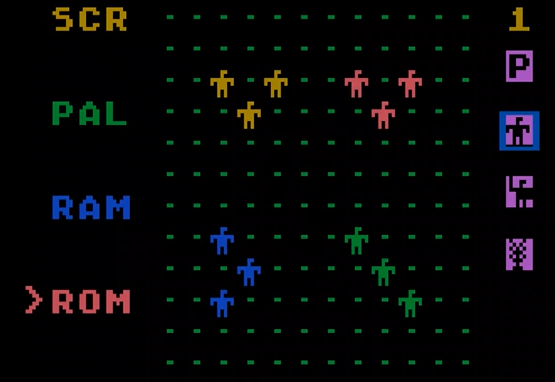
Once each player has played their turn, the turn is resolved using the “Life” part of the ruleset:
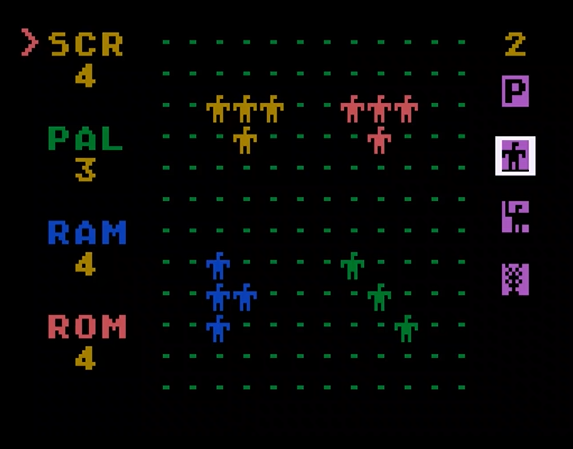
The game carries on like this for a while:
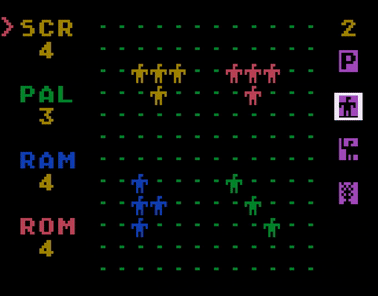
At the beginning of turn 5, I am satisfied with my expansion, but I am also worried that my civilization could wither due to the lack of empty tiles in my corner of the map. Instead of adding a tribe, the game allows a player to add a farm on an empty tile. A farm provides 2 units of food to all neighbouring tribes (instead of one for an empty tile). I start to build some of these:
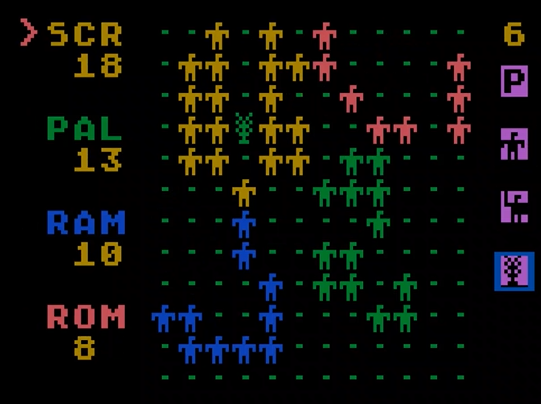
Alas, even the farms could not prevent a population decline:

Two turns later, my population bounces back somehow, but I have a new problem: the blue and green players are encroaching on my quadrant of the map, occupying my food tiles. I don’t like it one bit, and I deploy the last option available in Dawn of Civilization: the Legion.
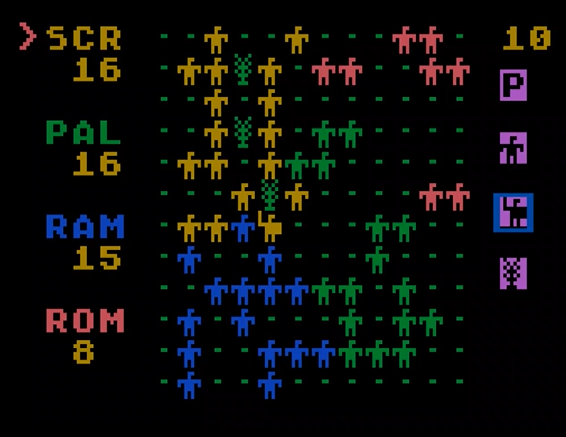
The Legion does not contribute to reproduction, but stops hostile tribes from spawning in all the tiles around it. Soon, the blue and green civilizations are kept at bay.
At the start of the last turn, it is a draw at 19 tribes between my tribe and the greens…
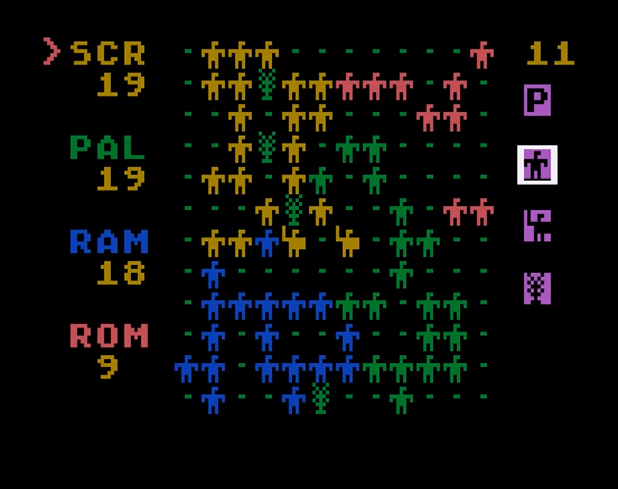
Alas, my population recedes during turn resolution and I lose.

Dawn of Civilization is not a wargame, but I am going to play every game whose name includes “Civilization”. I applaud the intent to gamify the Game of Life, but I don’t think it works – or even that it could work. It is already difficult and time-consuming to anticipate the next turn in Game of Life, but in Dawn of Civilization you also need to consider your actions and those of your opponents. I believe that if you want to see two turns ahead you have to analyze thousands of possible states, and you can’t even incrementally exclude the worst outcomes due to the way tribes die or reproduce: a strong board position one turn can collapse into the worst position the following turn. If you are not an artificial neural network or a Fields Medal nominee, this game is not for you.
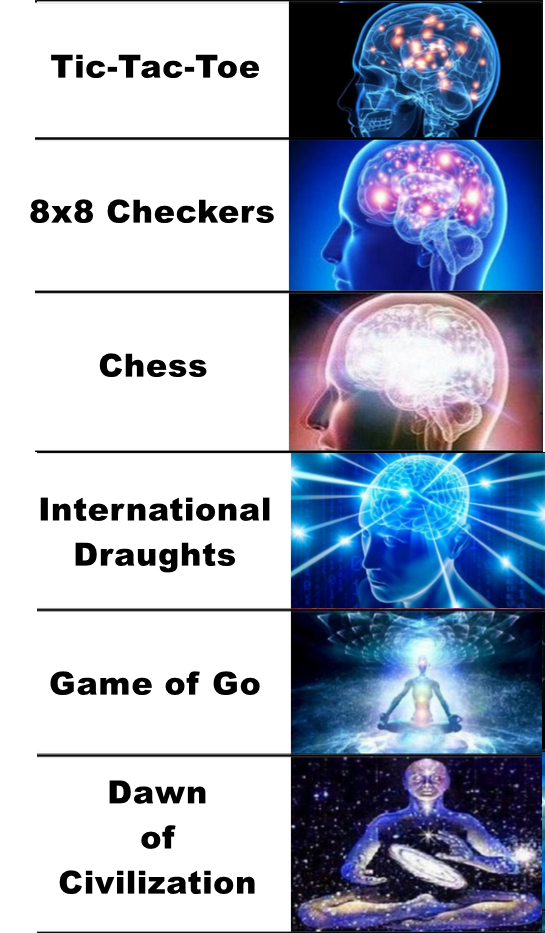
Amusingly enough, the last George Schwenk game I want to cover is the opposite of Dawn of Civilization; and the next article will be about the streamlined action-strategy Panzer War!